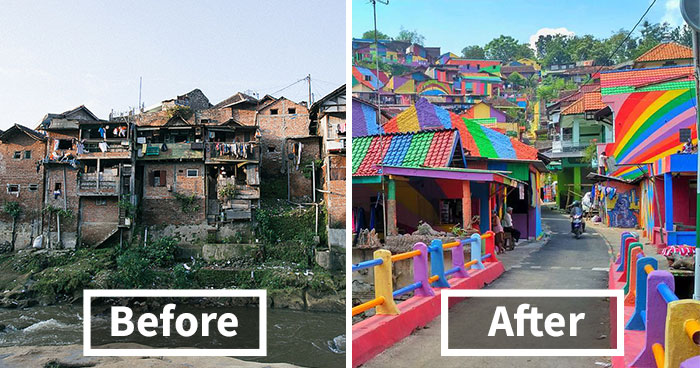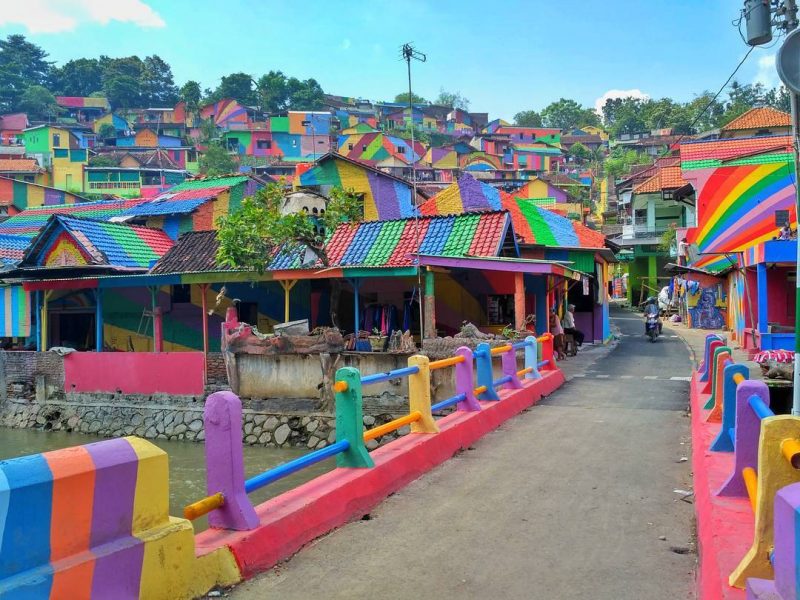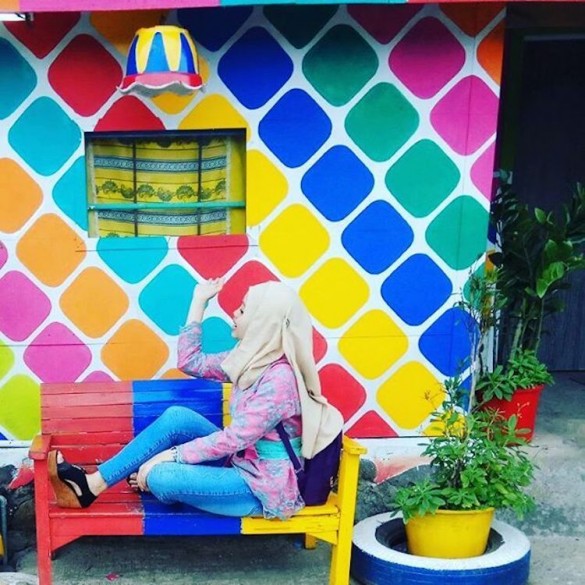The government’s decision to invest Rp.300 million (about US$29,000) on Kampung Pelangi’s slum makeover in South Semarang shows its dedication to achieve a sustainable development goal in a creative turn – offering an alternative solution to the local housing crisis.
It came as a surprise when the government made the decision to invest around US$29,000 on giving the village of Kampung Pelangi (which literally translates to ‘Rainbow Village’) in Randusari the slum transformation it deserves. Redeveloping the slum village was one of the government’s initiatives to bring in more visitors to the town. When Slamet Widodo, a junior high school principal came up with the idea to transform the area into a rainbow village, the government could not help but to accept it.
After just one month from the makeover, Kampung Pelangi was open to the public and the project proved to be colourfully successful. It went from being a struggling village, originally named Kampung Wonosari, to an iconic tourism spot.
The slum transformation even caught worldwide attention and sparked an impressive Instagram craze, as more than 200 homes were painted in eye-catching rainbow stripes. Thousands of Instagrammers hailing from all walks of life quickly turned to Kampung Pelangi for a picturesque backdrop and were excited to witness its vibrant exterior.
Thanks to Kampung Pelangi’s newfound specialty in boosting local economy, the government is reportedly planning to expand the creative project by building more homes in the future – proving that there is a way to improve the quality of life in slum areas without eliminating them.
Slum Transformation Is Better Than Eviction
Many of us are used to thinking that forcible eviction is the only solution to address issues found in slum areas, such as extremely poor living conditions, health, lack of access to education and land ownership rights – all of which make informal settlements look like they do not belong in the city.
In many cases, slum dwellers must defend their settlements in front of authorities struggling to figure out what to do with these areas, ultimately causing major strife within their relationships.
This especially happens in many developing countries across the globe – such as Nigeria, where over 30,000 settlements in the country’s largest city of Lagos were demolished in April and thousands of its people were brutally forced to leave their homes by bullets and teargas; India, which proposed to make Mumbai slum-free by 2022; and of course, Indonesia.
Within the local context, last year, a number of slum dwellers launched a landmark legal case to oppose the existing constitutional law which has allowed the removal of slum communities across the archipelago since 1960. The case emerged after the government decided to push forward with the flood mitigation project in Jakarta, which was meant to prevent annual floods from happening in the future. The situation quickly sparked outrage among slum residents who were once again left powerless and felt subjugated by the authorities.

The traditional solution to address issues in slum dwellings involving eradicating the areas, often leave dwellers to search for new homes and even new employment. In certain cases, the government promises to build them new houses – which virtually appear to be more apt for contemporary society – and that slum dwellers would presumably be happy with the idea of relocating, as they no longer wish to live in such a substandard environment. Yet, this turns out to be just one of the many other misconceptions surrounding slum dwellers.
What many of us often fail to understand is that slum areas are not always the source of the concomitant issues that go along with their existence, and that not all slum dwellers would instantly leave their settlements for a formal housing when they are given the chance. While we urban residents tend to question their ability to withstand living in squalor and the seemingly overcrowded spaces, most slum dwellers are fine with their living conditions.
In fact, they are more than capable of making their own communities sustainable. And they are not the only ones who think so. Architects have come up with models that show that slum and urban dwellings could very much coexist, while NGOs continue to fight for the welfare of slum residents. Yet still, slum dwellers need the government to show its support in order to thrive.
Kampung Pelangi Shows What Creative Sustainability is All About
With the UN’s recent adoption of the New Urban Agenda, governments all around the world are working to sustain slum areas and fulfil the rights of those living there. The New Urban Agenda itself was officially adopted from The Habitat III conference, held in December to achieve sustainable urban development and figure out new ways to improve living conditions in cities.
It features a number of indicators that shall be met by slum areas, which include receiving social protection programme; having access to healthcare, clean water, safe sanitation; and decent indoor air quality. The agenda’s focus on slum areas has empowered dwellers to protect their own communities while also encouraging authorities to work together with them.
We need to realize that the idea of sustainability itself centres upon people and their needs. It takes everyone to come together and listen to each other’s wishes and concerns in order to come up with solutions that are mutually beneficial – as the local government managed to accomplish when listening to Principal Widodo’s suggestion to paint the whole slum village in rainbow hues.
The establishment of Kampung Pelangi allows us to see how innovation and sustainability collaborate to fulfil a social mission. At times it can be difficult to find how government’s initiatives can go together with social purposes. Yet that does not mean that sustainability cannot be achieved.
Featured Image via @arieprakhman






